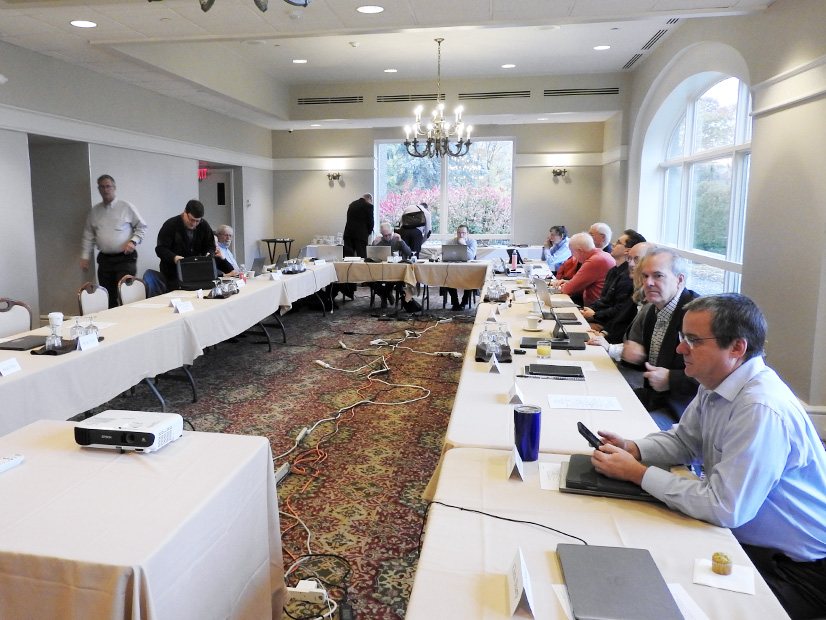ALBANY, N.Y. — The New York State Reliability Council Executive Committee last week approved for industry comment interconnection standards for inverter-based resources larger than 20 MW (Proposed Reliability Rule 151).
“The need for [IBR standards] has grown since April,” said Roger Clayton, chair of the NYSRC’s Reliability Rules Subcommittee, who noted that renewable projects in NYISO’s queue grew from about 57 GW in spring to 120 GW on June 30. “This is an urgent need.”
The committee, which approved PRR 151 at its Nov. 9 meeting, has been working with the Reliability Rules Subcommittee to fill gaps in NYISO’s current interconnection criteria for IBR resources. The proposed rules would take effect in all interconnection projects following, excluding the current Class Year 2023. The rule, which aligns with the recently approved IEEE Standard 2800-2022, guides the ISO to incorporate specific performance criteria, databases and model validation methods for IBRs within its authority. (See “Inverter-based Resources Standard,” NY State Reliability Council Executive Committee Briefs: June 9, 2023.)
IBRs are pivotal because they convert direct current from solar and wind into alternating current, the standard form of power for the grid. IBRs also manage the flexible charging and discharging of batteries and allow very fast ramping and frequency response.
Advanced capabilities of IBRs, such as fault ride-through and voltage regulation, also ensure the reliability and quality of power. Yet IBR integration presents new challenges due to their variability and the need for innovative control strategies, as revealed in numerous NERC disturbance reports since 2016. PRR 151 addresses this reliability risk by requiring developers to attest that their plants meet the IEEE 2800-2022 standards to ensure these resources perform reliably. (See “Inverter-based Resources Standard,” NY State Reliability Council Executive Committee Briefs: June 9, 2023.)
Clayton said, “we’re at the leading edge of this,” adding it was important that New York “get something on the books” because the interconnection queue keeps growing and the projects seeking interconnection keep getting larger.
The NYSRC says adopting PRR 151 will safeguard the New York Control Area’s reliability as it pivots toward renewable resources, protecting the state from potential system supply disruptions that were seen in other states like Texas, Utah or California where IBRs failed during routine transmission disturbances.
“We’ve gone through this with NYISO in a very detailed manner,” Clayton said, in reference to how the ISO has been integral in making PRR 151 “very focused and very clear. In addition, the changes were sensitive to other stakeholder comments received during the initial posting.”
Chris Sharp, senior compliance attorney with NYISO, said the rule would be applied by the ISO “on a rolling basis,” with projects examined for compliance when submitting an interconnection application.
Zach Smith, vice president of system and resource planning at NYISO, said ISO staff does not anticipate any tariff revisions will be necessary to implement PRR 151. “Coincidentally, this is coming at a handy time,” he said, referring to the ISO’s efforts to reconfigure its interconnection processes to comply with FERC Order 2023. (See NYISO Stakeholders Question Proposed Interconnection Timelines, Deposit Rules.)
IRM Modeling Updates Approved
The Executive Committee also approved the final data parameters, case sensitivities and base case for the 2024/25 installed reserve margin study.
Last month, the committee approved modeling assumptions and a white paper that set forth how emergency operations would be accounted for in next year’s IRM. (See “IRM Modeling Updates Approved,” NY State Reliability Council Executive Committee Briefs: Oct. 13, 2023.)
Michael Mager, a partner at Couch White who represents Multiple Intervenors, a group of large industrial, commercial and institutional energy consumers, opposed the approvals, saying the changes under the new model for external emergency assistance were excessive.
The NYSRC will consider the final study report as part of its deliberations on the IRM for the next capability period at its December meeting.

